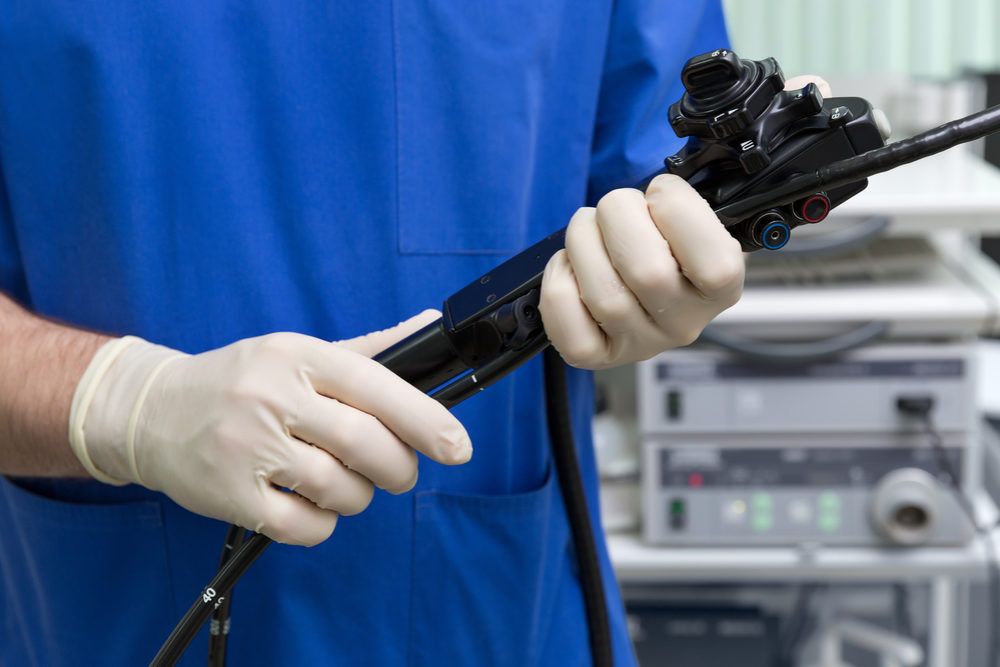FDA Warns Of Cross Contamination Risk With Some Endoscope Designs

Amid continuing concerns about the risk of “superbug” infection outbreaks among hospital patients, federal regulators warn that some endoscope connectors may carry a risk of infection from cross contamination, due to certain designs that may prevent proper sterilization between patients.
The FDA issued a letter to health care providers on April 18, indicating that there is a risk of cross-contamination from 24-hour multi-patient use endoscope connectors. While the warning was not limited to one particular manufacturer, the FDA did specifically note the ERBEFLO port connector, by Erbe USA, Inc., which the agency says does not include a backflow prevention feature.
The connectors are used in gastrointestinal endoscopy, and are designed to be used with multiple patients over a 24-hour period without the need for reprocessing, or sterilization. The connectors deliver water from a water source and irrigation tubing.

Did You Know?
Millions of Philips CPAP Machines Recalled
Philips DreamStation, CPAP and BiPAP machines sold in recent years may pose a risk of cancer, lung damage and other injuries.
Learn MoreHowever, the FDA recommends that any connectors have backflow prevention features that prevent patient fluids from flowing backwards into the endoscope, which the ERBEFLO and similar designs do not have.
“The FDA’s assessment has found that the recommended instructions and device design for the ERBEFLO port connector do not adequately mitigate the risks of cross-contamination for endoscopy patients,” the letter states. “This is because the connector, tubing, and/or water bottle can become contaminated with blood, stool, or other fluids from previous patients that travel back through the endoscope channels into the connector and tubing.”
The agency is recommending that health care professionals avoid the use of any 24-hour multi-patient use endoscope connector. The FDA suggests doctors stick to single-use endoscope connectors with backflow prevention features, or reusable endoscope connectors with backflow prevention features. The latter should always be reprocessed according to their instructions between patient uses.
The FDA called on health care providers to report any adverse events related to the use of these connectors to its MedWatch adverse event reporting system.
Duodenoscope Infection Risks
The concerns over the connectors come as the FDA attempts to solve problems with duodenoscopes, another type of endoscope, which have been linked to several hospital infection outbreaks in recent years.
Duodenoscopes are used during endoscopic retrograde cholangiopancreatography (ERCP) procedures, which involves use of the scope to examine the bile ducts, pancreatic duct or gallbladder. However, problems with cleaning the endoscopes have emerged in recent years, with several high-profile “superbug” infection outbreaks linked to the devices, even when facilities following the recommendations provided by Olympus Corp. and other manufacturers.
The problems with ERCP duodenoscope infections began to gain widespread media attention in early 2015, after nearly 200 patients treated at California’s UCLA Medical Center were told that they may have been exposed to a deadline bacteria known as carbapenem-resistant enterobacteriaceae (CRE).
After at least seven confirmed infections were identified among individuals who underwent an ERCP involving use of duodenoscopes at UCLA, problems were identified with the cleaning instructions provided by Olympus, one of three duodenoscope manufacturers.
Similar outbreaks at other hospitals have been linked to devices made by Olympus and other manufacturers, with reports suggesting that a movable “elevator” at the tip of the device may trap pathogens and blood from prior patients, even when recommended reprocessing steps are followed to clean the device between techniques.
In May 2015, an FDA advisory committee determined that the devices “do not provide a reasonable assurance of safety and effectiveness” due to the difficulty cleaning them. The panel said that manual cleaning is still important and needs to continue, but also recommended that the FDA reclassify duodenoscopes from semi-critical medical devices to critical medical devices and said reprocessing needs to be taken from “high level disinfection” processes to full sterilization.
Despite the concerns, the FDA panel of outside experts also determined that the benefits provided by ERCP procedures still outweigh the risks associated with the use of duodenoscopes. They called on the agency to develop a guide of best practices to make sure that manufacturer instructions are followed, in addition to the need for better instructions overall.
The FDA issued a safety communication expanding cleaning instructions for duodenoscopes used in ERCP procedures in August 2015. In addition, manufacturers have issued new cleaning instructions, and some have redesigned the elevator tips believed to be the area where blood and tissue get trapped to make them easier to clean.
Last month, the FDA issued warning letters to duodenoscope manufacturers for failing to keep up with postmarketing studies that were required following the outbreaks.
Several duodenoscope infection lawsuits have been filed against Olympus over the infections linked to the UCLA outbreak, and it is possible that FujiFilm will face similar cases. The complaints allege that design problems that make the scopes especially difficult to clean, placing patients at higher risk of contracting illness.
Get more articles like this sent directly to your inbox.
"*" indicates required fields





0 Comments